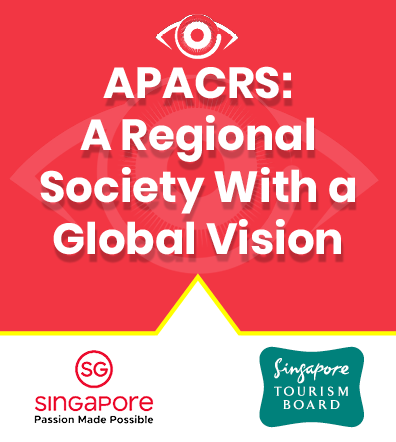Eyeworld Weekly Update |
Volume 21, Number 34 |
23 September 2016 |
- Johnson & Johnson buys AMO
- Spectralis OCT Glaucoma Module gains U.S. approval
- Novelia granted U.K. approval
- Positive Phase 3 topline efficacy results reported on Roclatan
- Two studies demonstrate "promising" results with PiXL
Johnson & Johnson buys AMO
Johnson & Johnson (New Brunswick, New Jersey) will purchase Abbott Medical Optics (Abbott Park, Illinois) for about $4.3 billion in cash, the company said in a press release. The acquisition includes all of Abbott Medical Optics' business segments: cataract surgery, laser refractive surgery, and consumer eye health. The transaction is set to close in the first quarter of 2017.
Spectralis OCT Glaucoma Module gains U.S. approval
Heidelberg Engineering's Glaucoma Module Premium Edition for Spectralis "provides a comprehensive analysis of the optic nerve head, retinal nerve fiber layer, and ganglion cell layer by precisely matching unique scan patterns to the fine anatomic structures relevant in glaucoma diagnostics," and has just received Food and Drug Administration approval, the Heidelberg, Germany-based company said. The module is based on research collaborations between two groups led by Balwantray Chauhan, PhD, Dalhousie University, Halifax, Canada, and Claude Burgoyne, MD, Devers Eye Institute, Portland, Oregon. Using proprietary technology, the module creates an anatomic map unique to each patient's eye using two fixed, structural landmarks: the center of the fovea and the center of Bruch's membrane opening. All subsequent scan protocols are automatically oriented according to each eye's unique anatomic map, enabling "a precise examination of relevant structures over time," according to the press release.
Novelia granted U.K. approval
U.K. health authorities have granted approval for the Novelia system, the "the first and only preservative-free multidose eyedropper" for the treatment of glaucoma, developer Nemera (Lyon, France) said. Novelia features a multidose closing tip system that avoids the need for preservatives in the drug and prevents bacterial contamination over the duration of treatment.
Positive Phase 3 topline efficacy results reported on Roclatan
The 90-day primary efficacy results of the 12-month, phase 3 Mercury 1 clinical trial for fixed-dose combination product candidate Roclatan (netarsudil/latanoprost) achieved its primary efficacy endpoint demonstrating statistical superiority over each of its components, developer Aerie Pharmaceuticals (Irvine, California) said in a press release. According to Aerie, the IOP-lowering effect of Roclatan was 1-3 mm Hg greater than monotherapy with either latanoprost or netarsudil (Rhopressa) in patients with IOPs from above 20 to below 36 mm Hg for each of the nine measured time points. Additionally, the mean diurnal IOP-lowering of Roclatan exceeded that of latanoprost by an average across the study duration of 1.9 mm Hg and exceeded Rhopressa by 2.6 mm Hg. Roclatan reduced mean diurnal IOPs to 16 mm Hg or lower in 61% of patients, a significantly higher percentage than observed in the comparator arms.
Two studies demonstrate "promising" results with PiXL
Non-surgical photorefractive intrastromal corneal collagen crosslinking, or PiXL, has shown promise in two European studies, developer Avedro (Waltham, Massachusetts) said in a press release. The first study evaluated the safety and efficacy of epithelium-off PiXL. This 12-month study included 39 eyes (phakic and pseudophakic) in two groups (group 1: MRSE -1.0 D to -2.0 D, cyl. max. -0.75 D; group 2: MRSE -2.0 D to -3.0 D, cyl. max. -0.75 D). Preliminary results at 12 months demonstrate significant improvement with mean uncorrected visual acuity (UCVA) of 20/20 and no loss of best corrected visual acuity (BCVA). The second study analyzed the safety and efficacy of transepithelial PiXL in correcting low myopia, and evaluated treatment results in eight patients (14 myopic eyes, -1.62±0.6 D, range -0.75 to -2.625 D) who underwent the procedure and were followed for 9 months postoperatively. Efficacy findings included a mean myopia reduction of 0.75 D at 9 months. Safety evaluations found no significant loss in endothelial cell count or BCVA, and no significant corneal haze post-procedure. A questionnaire administered at 6 months postop also found high levels of patient satisfaction.
 Licensed Publications |
Licensed through ASCRS American Society of Cataract and Refractive Surgery, 4000 Legato Road, Suite 700, Fairfax, VA 22033-4003, USA.
All rights reserved. The ideas and opinions expressed in EyeWorld Asia-Pacific Weekly News do not necessarily reflect those of the ASCRS�ASOA or APACRS. Mention of products or services does not constitute an endorsement by the ASCRS�ASOA or APACRS. Copyright 2008, EyeWorld News Service, a division of ASCRS Media. |



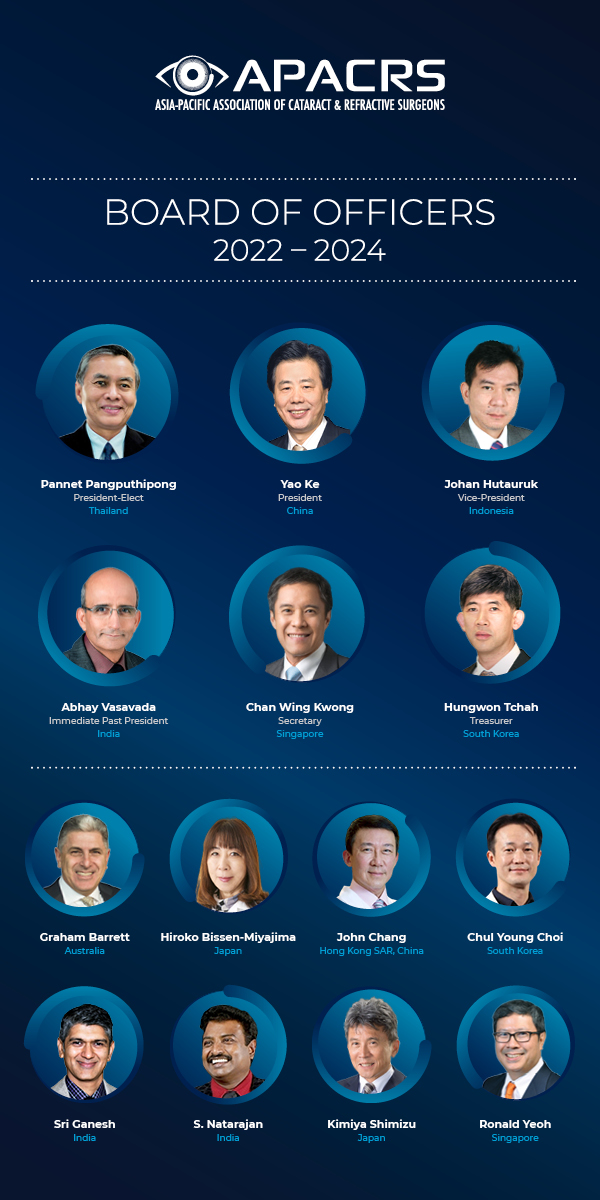
 EyeSustain Update
EyeSustain Update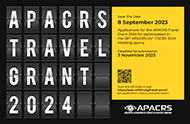 2024 APACRS TRAVEL GRANT
2024 APACRS TRAVEL GRANT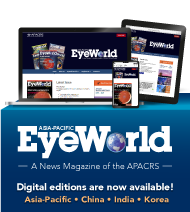 Digital EyeWorld
Digital EyeWorld VOL. 39 (2023), ISSUE 3
VOL. 39 (2023), ISSUE 3  Membership Information
Membership Information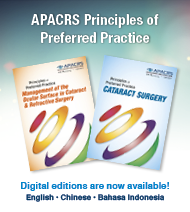 APACRS Principles of Preferred Practice
APACRS Principles of Preferred Practice